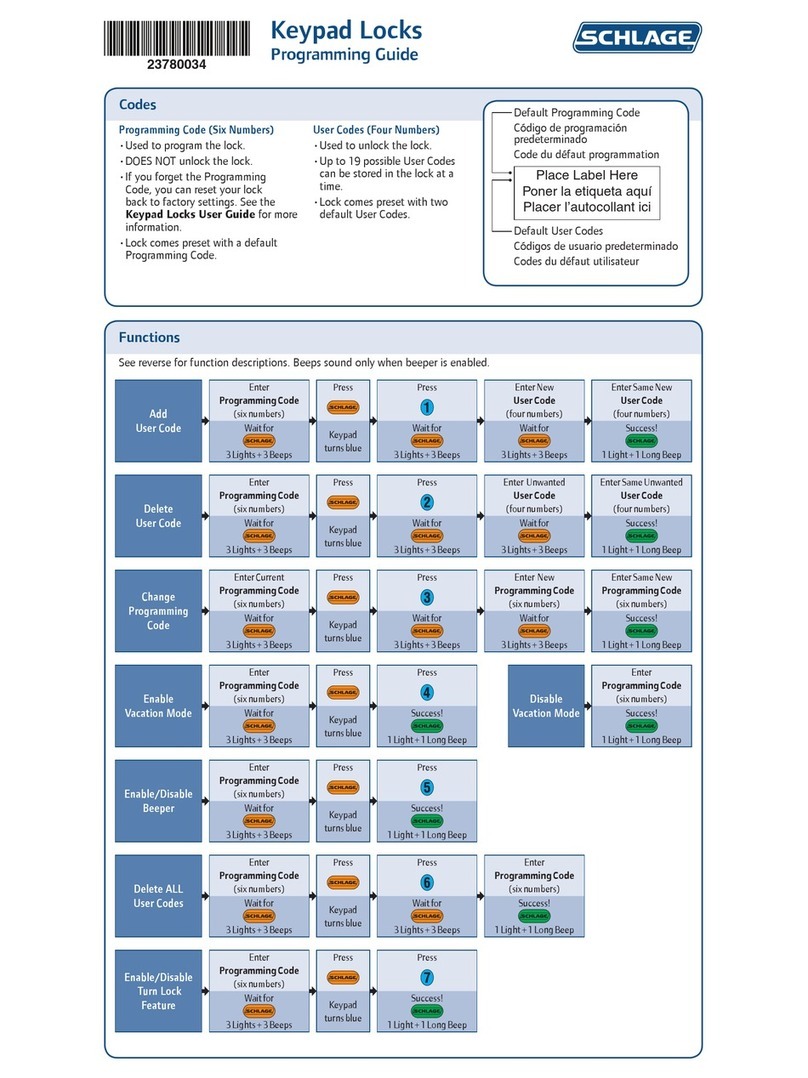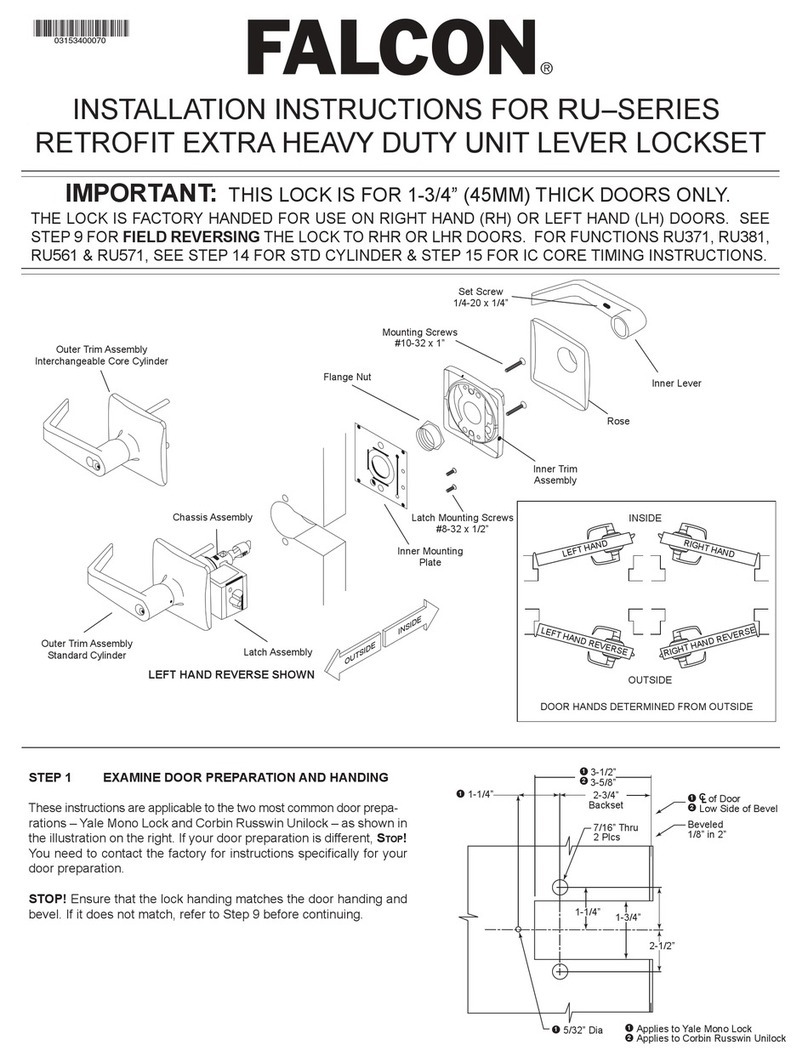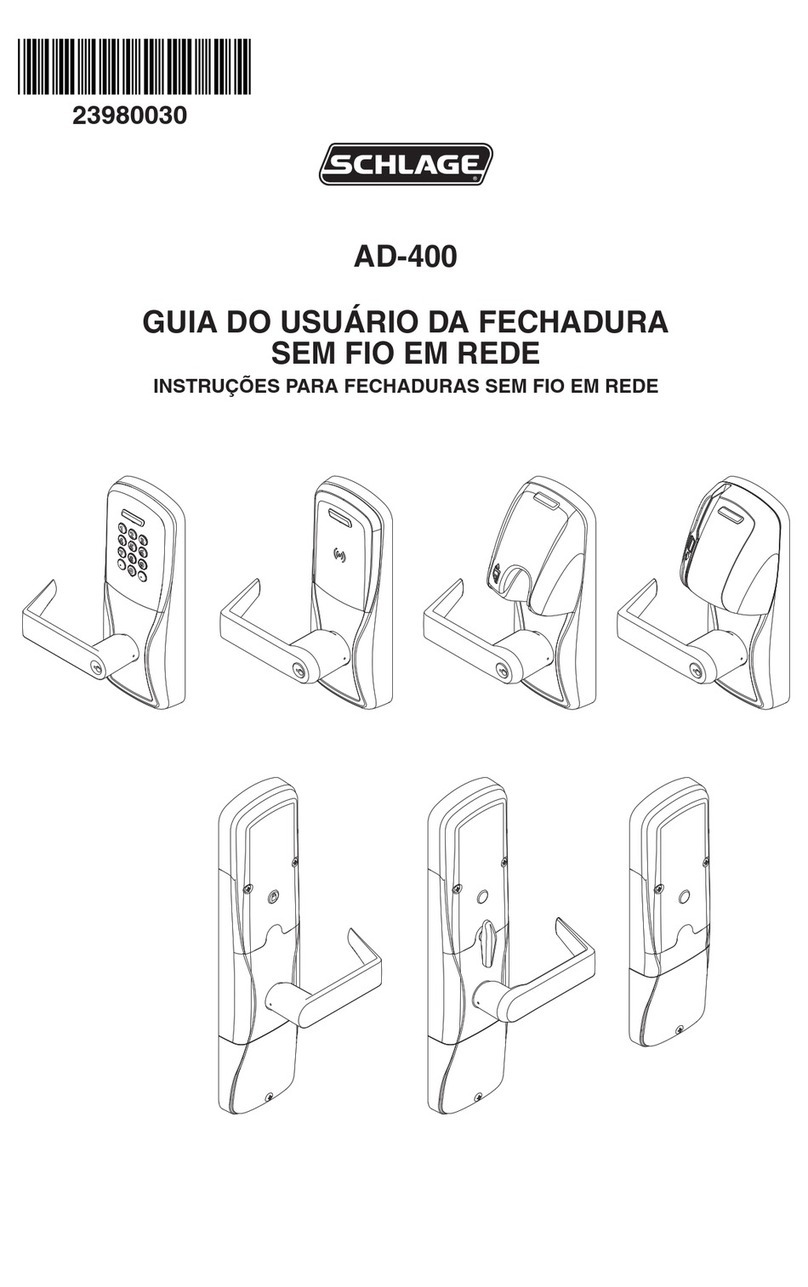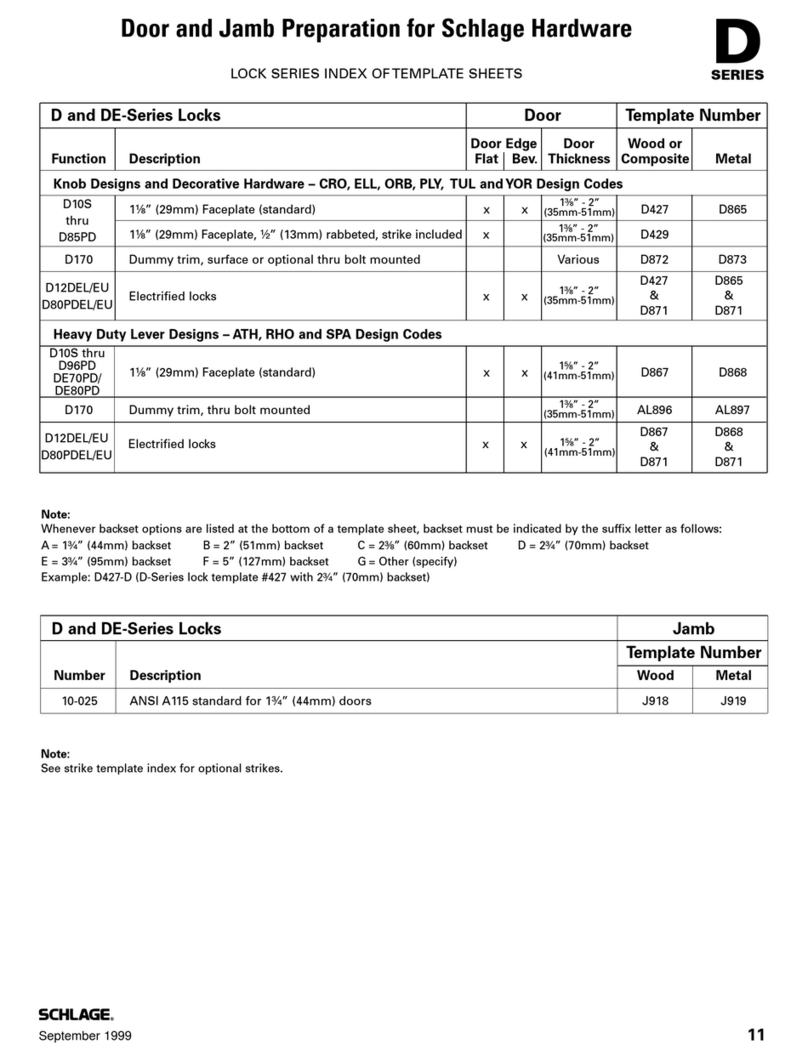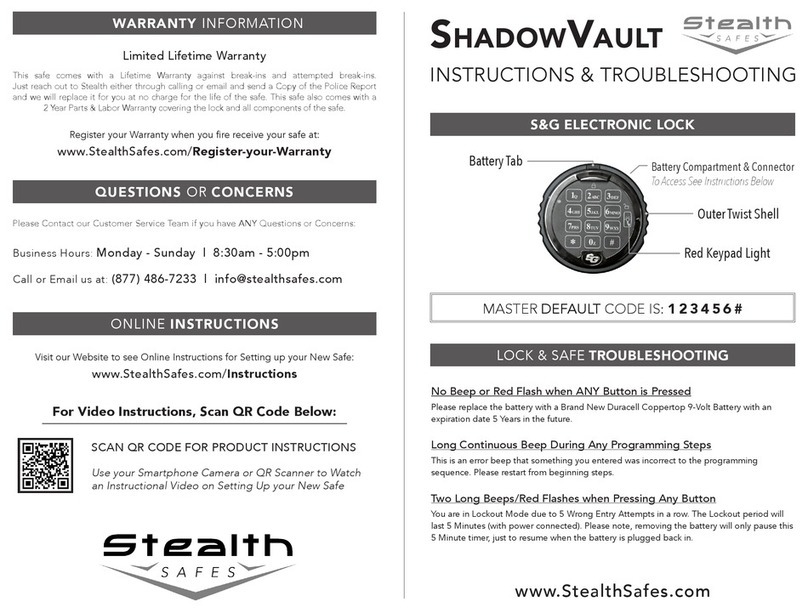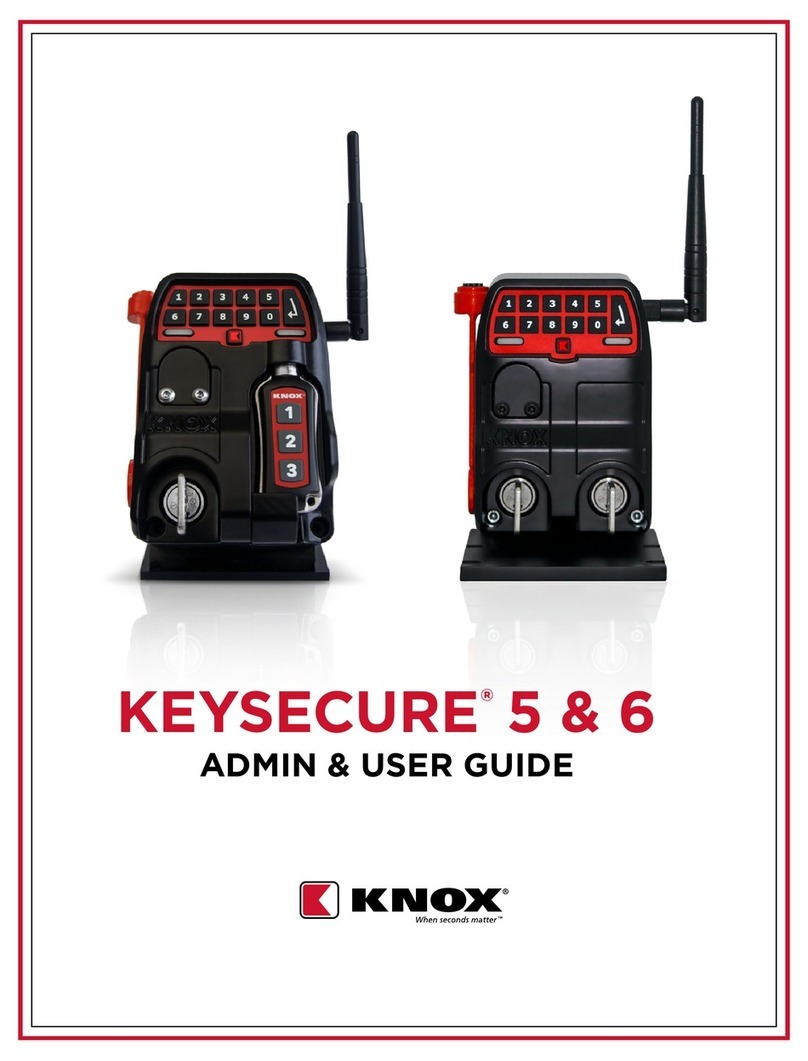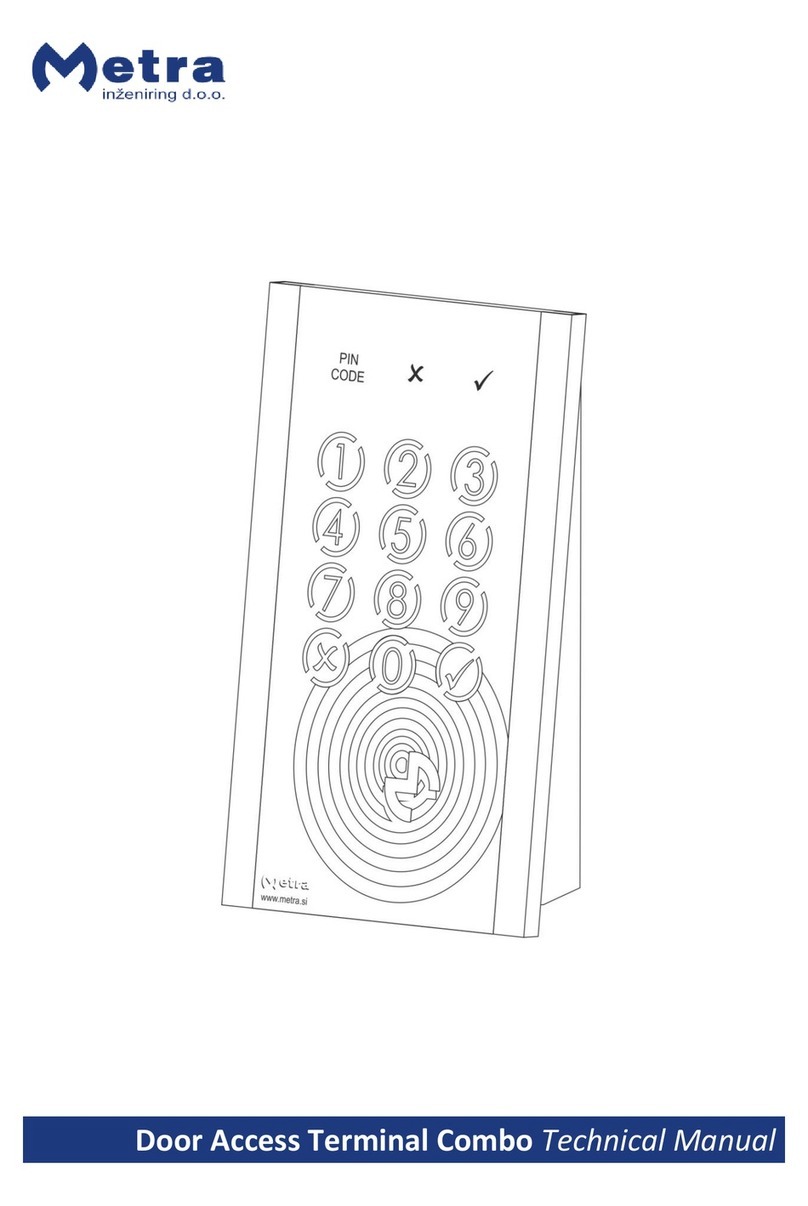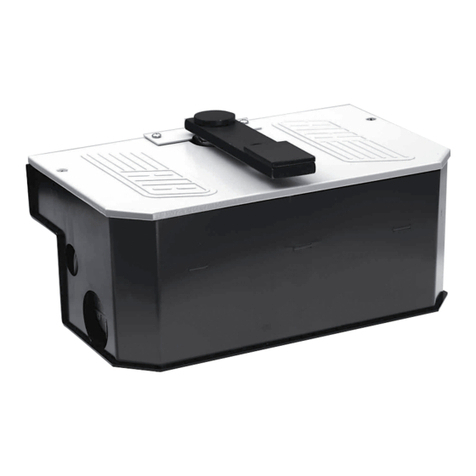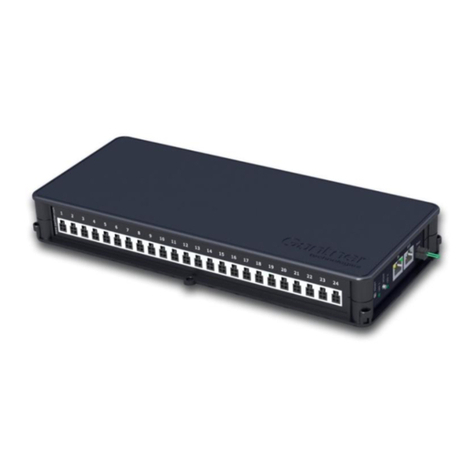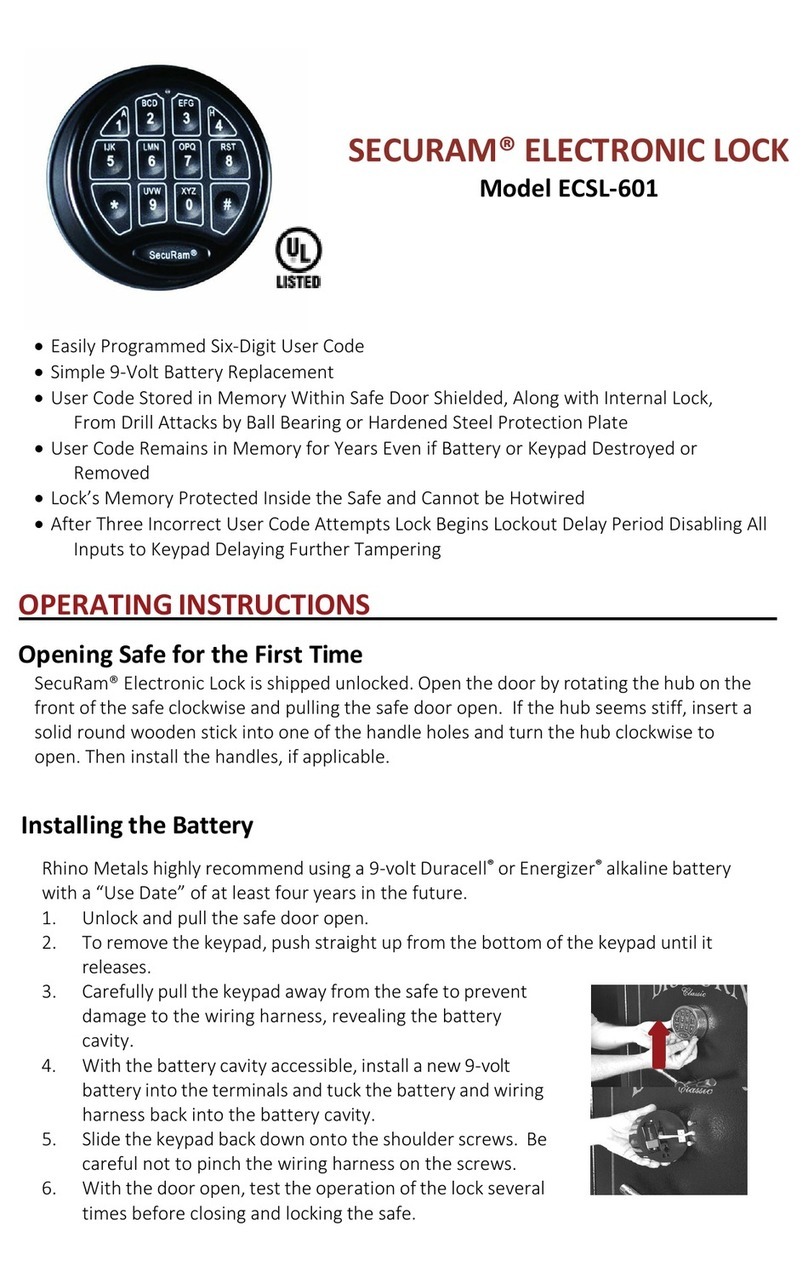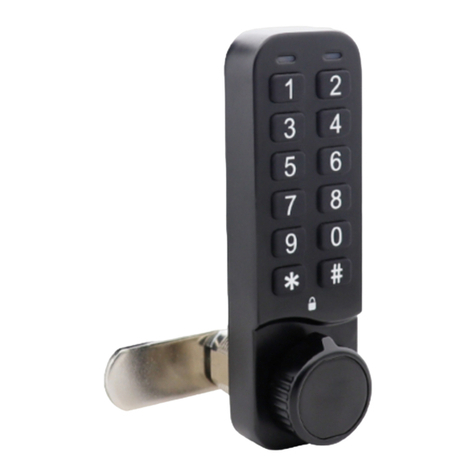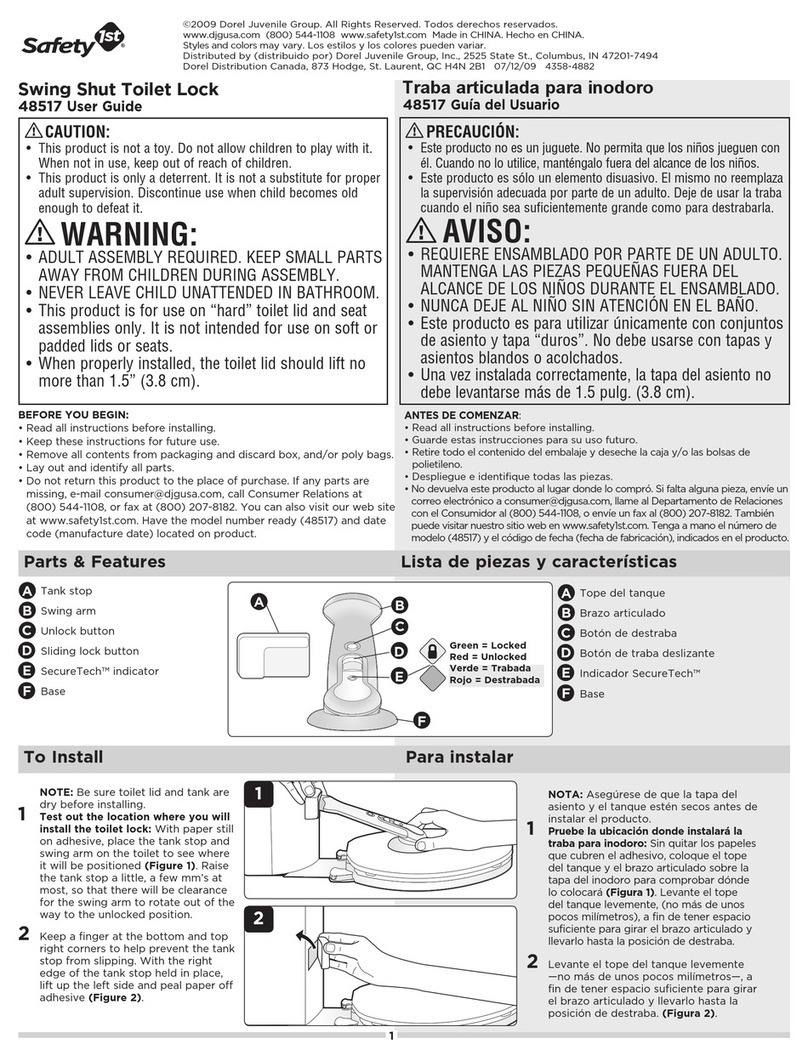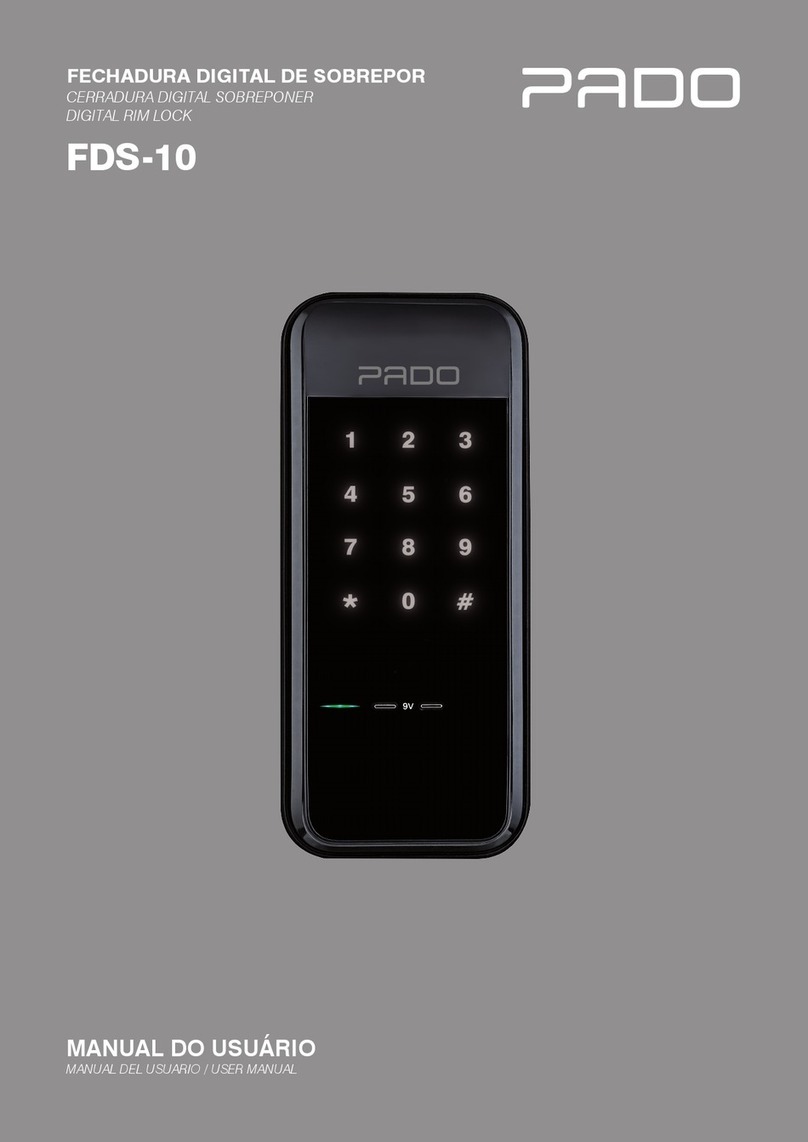
5
Conventional Cylinders
Service Manual
The following instructions assume that the reader has
basic experience pinning conventional cylinders. The
difference with Everest™ cylinders is the check pin and
spring located in the special chamber on the bottom of
the plug. If using a key to remove the plug, the key will
hold both the check pin and check pin spring in place.
Rekeying When You Have the Old Key
(no master keying)
1. Remove the cam, tailpiece or other type of plug retainer.
2. Insert the old key and turn it slightly in either direction.
3. Push the plug out gently with a plug follower.
Key holds
check pin
in place
4. While the key is still in the plug to hold the check pin
in place, discard the old pins.
5. Hold the check pin in the plug with your finger or
thumb. Remove the old key and insert the new key.
6. The new key holds check pin in place while the bottom
pins are installed and the plug is put back into the shell.
7. Reinstall the cam, tailpiece, etc.
Lip raises check pin
and holds it in plug.
Master Keying
The master keying capacity of full size Everest™
cylinders is the same as Schlage Classic™ cylinders:
4,096 theoretical changes per keyway using two step
progression. The MACS is 7. When master keying
Everest cylinders, Schlage recommends using a setup
key to reinstall the loaded plug.
A setup key can be made by cutting a key blank to a 9
depth in all positions. When the steeples between the
cuts are removed, the setup key can hold the check pin
in place when removing the plug of a shimmed cylinder.
#9Depth Key for
Setup Key
1. Insert any operating key and turn it slightly in either
direction. Gently push the plug out with a plug follower.
2. Keeping the old key in the plug, discard the old pins.
Key holds
check pin
in place
3. Hold the check pin in position with a finger or thumb.
Remove the old key and insert the setup key. If you
are certain that the cylinder was not previously
master keyed, skip to step 5.
4. IMPORTANT: Clear the cylinder shell of any
remaining master pins. If master pins remain in the
shell, the following problems may occur:
• A key cannot be inserted or removed
• One or more springs may get crushed and cause a
future lockout
• Additional keys will operate the cylinder.
Slowly back the follower out of the shell. Replace any
weak or damaged springs. Load the proper size top
pin based on the plug total (bottom pin + any master
pins). A plug follower with a groove will help guide
each spring and top pin into its chamber as you push
the follower in from the back of the shell. (The 40-116
shell loading tool can make this process easier.)
5. Install new bottom and master pins into the plug.
6. Orient the plug so it is slightly turned with respect to
the shell. Gently push the plug into the shell, pushing
the plug follower out.
7. Test all keys for smooth operation.
8. Reinstall the cam, tailpiece, etc.
